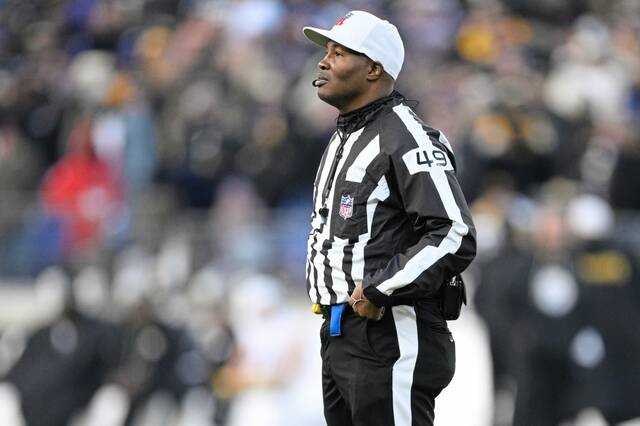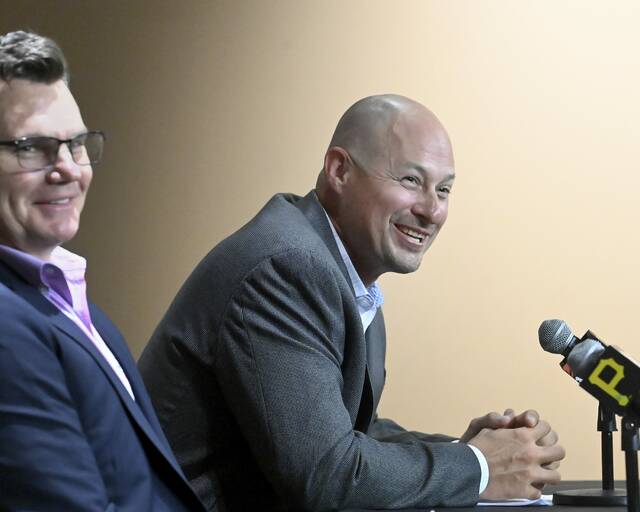The Tribune-Review is following its Best to Ever Wear It series, a daily countdown of the greatest college and pro athletes to wear every jersey number from 99 to 0/00, by honoring the Best to Never Wear It. The six athletes spotlighted didn’t wear a numbered uniform but brought pride to Pittsburgh through their sporting achievements.
Baseball: Honus Wagner
Louisville Colonels owner Barney Dreyfuss and his player/manager, Fred Clarke, traveled from Louisville to Paterson, N.J., one day in 1897 to watch a barrel-chested, bow-legged outfielder play baseball.
They weren’t impressed.
Honus Wagner was short (5-foot-11) and stocky (200 pounds), and his massive hands seemed too big for his body.
Dreyfuss’ Colonels had finished last in the National League the year before, and he needed players. So, at the urging of Colonels club secretary Harry Pulliam, he agreed to pay the 23-year-old Wagner $250 a month to join his club, according to an article on the Society of Baseball Research website and baseball-reference.com.
Nice investment.
Wagner went from the independent Atlantic League to the Colonels in the established National League, where he hit .335 in his first 62 games. Then, for the next 16 seasons — all but two with the Pittsburgh Pirates — Wagner’s final batting average never slipped below .299.
When Dreyfuss bought interest in the Pirates in 1900, he engineered a 16-player trade between his two teams — the Colonels eventually dissolved — that brought Wagner back home to his native Pittsburgh.
Born in 1874 to German immigrant parents in the town of Mansfield (now Carnegie), Wagner turned into one of the three greatest Pirates of all-time, along with Roberto Clemente and Paul Waner. He played in an era when jerseys had no numbers, although he wore No. 33 as a Pirates coach from 1933-51.
In 1900, Wagner’s first season with the Pirates, his annual salary increased from $1,950 to $2,100. He responded by hitting a career-high .381, with a 1.007 OPS, 45 doubles, 22 triples and 100 RBIs.
Over a 21-year career, he led the National League in batting average eight times. His weakest average in those years was .334. Among many other achievements, he led the league in doubles (seven times), triples (three), RBIs (four) and stolen bases (five).
He manned shortstop for 1,887 games, but over his career, he played every position except catcher. He even pitched in two games, throwing three wild pitches.
In an article on the National Baseball Hall of Fame website, Hall of Fame manager John McGraw called Wagner “the nearest thing to a perfect player, no matter where his manager chose to play him.”
Yet, Clarke, who became player-manager of the Pirates, constantly was irked by Wagner’s habit of taking his time on throws to first base, making the play closer than it needed to be. Wagner said he would change when he stopped throwing runners out.
Wagner retired in 1917, but he holds three Pirates records: games played (2,433, tied with Clemente), runs (1,521) and triples (232). He is second to Clemente in hits (2,967), although he totaled 3,420, including his three seasons in Louisville.
He also is second to Max Carey with 629 stolen bases. Given his speed and 723 career steals, plus his heritage, he more than earned the nickname, “The Flying Dutchman.”
Wagner never made more than $10,050 a year, but he was loyal to Dreyfuss, once turning down a $20,000 offer from the Chicago White Stockings.
Wagner led the Pirates to the World Series in 1903 and ’09. When the Pirates defeated the Detroit Tigers and the great Ty Cobb in ’09, Wagner stole six bases, a record that stood until Lou Brock broke it in 1967. Even sweeter, Wagner hit .333 in the Series to Cobb’s .231.
He joined Cobb, a baseball rival and fishing buddy, as charter members of the Baseball Hall of Fame in 1936, along with Babe Ruth, Christy Mathewson and Walter Johnson.
Hall of Fame pitcher Burleigh Grimes, a teammate for Wagner’s final two seasons, remembers the day Wagner swung and missed at a curveball from a rookie pitcher.
“The pitcher threw Honus a curveball, and he swung at it and missed and fell down on one knee,” Grimes was quoted in an article on the National Baseball Hall of Fame website. “Looked helpless as a robin. I was kind of surprised, but the guy sitting next to me on the bench poked me in the ribs and said, ‘Watch this next one.’
“Those kids figured they had the old man’s weaknesses, you see, and served him up the same dish — as he knew they would. Well, Honus hit a line drive so hard the fence in left field went back and forth for five minutes.”
Check out the entire ’Burgh’s Best to Wear It series here.








